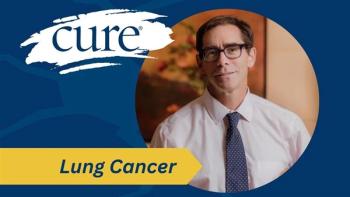
How to Write Your Cancer Story
Key Takeaways
- Establishing a clear purpose guides the focus and tone of your writing, whether to inspire, educate, or open dialogues about men's health.
- Selecting the right platform, such as Blogger or social media, is crucial for effectively reaching your audience and sharing your story.
As an avid writer about my testicular cancer experiences, I'm sharing my writing process.
Since November 2016, I have written and published over 200 different blog posts and articles about my experiences with testicular cancer. A big question I'm asked is, "How do do it?" Allow me to humbly present my process.
Step 1: Decide on Your Purpose
Before penning your first post, choose your "why." Are you writing to help and inspire other patients? Are you shedding light on the life of a cancer survivor? Are you trying to educate the general public? You'll also need to decide how personal and open you want to be in your posts. Once you have that established, it will help you narrow your lens of focus.
In my case, different pieces have different purposes. Some are to guide people facing testicular cancer, while others are to show the world what it's like to live with/after cancer. As a testicular cancer survivor with only one testicle, I'm primarily focused on a singular goal: opening up lines of communication in the general public about men's health and testicular cancer through humor and education. I pretty much bare it all… without physically baring it all.
Step 2: Choose Your Platform
Find what works best for you. I personally publish on Blogger for my personal testicular cancer awareness blog,
It's important to note that once you've completed Steps 1 and 2, you won't need to do them ever again, unless you want to make drastic changes.
Step 3: Brainstorm Ideas
While I publish in Blogger, I do all of my drafting in Google Docs (again, I'm a bit of a Google nerd). As soon as I've decided on my topic, I'll begin a blank Doc and list out crucial points I want to address in that piece over a few days span. To help myself stay organized, I title each piece as "## Short Subject." For example, this piece is titled "46 Writing Your Story."
The reason I do my actual writing process in Docs has less to do with my brand allegiances and more to do with how it fits my needs. I can access my Google Drive/Docs anywhere from any device and it's a collaborative platform, which is crucial for Step 7.
Step 4: Write a Rough Draft
Let the words flow through you and don't get too hung up on specific word choice or details. Oftentimes, I will just type in "ORGANIZATION" or "DATE" and fill those details in when I get to Step 6. The most important part in Step 4 - get a full first draft done in one sitting. In my opinion, it's easier to get your preliminary thoughts down in one go than to do it piecemeal.
Step 5: Walk Away
Once you've completed the full first draft, take a step back from the piece for a few hours or days.
Step 6: Come Back to it Later
When your chosen break is over, come back to the piece. This is when you'll edit for grammar, clarity, word choice, and details. Oftentimes, I'll find myself reorganizing some sections, adding more information to others, and even overhauling the entire piece.
It's invaluable to give yourself that time to decompress in Step 5. What might have seemed like a stupid tangent initially may end up being the strongest point, and the inverse may hold true as well.
Step 7: Find a Good Non-Cancer Editor
This can be a hard step, but an crucial one. In an editor, I wanted someone who has a strong mastery of the English language, understands and respects my voice, and is not a cancer survivor/patient themselves.
I am fortunate enough to have a best friend who teaches middle school English, hasn't had any type of cancer, and is always happy to edit pieces for me. Using Google Docs is hugely helpful for us because we can just make edits, suggestions, and comments directly on the Doc instead of having to email/text back and forth multiple copies and versions.
Even though you are writing about cancer and may have chosen your purpose in Step 1 as being directed at cancer patients/survivors, the general public will stumble upon your works. Having someone who has not gone through the same things helps make sure that the story is accessible and understandable to all. For example, most cancer patients know what a port is, but my editor asked me to put a quick explanation for the general masses.
Step 8: Give it a Final Pass
Look over it all and make sure that all errors have been caught and your overall message is strong. To be honest, if Steps 6 and 7 were done with fidelity, this step goes pretty fast.
Step 9: Prepare it for Publishing
It generally takes me anywhere from three days to two weeks to get to this step. This is when you'll give it a longer and catchier title, a heading/subheadings, and add pictures. These serve two purposes - it visually breaks up the piece to make it easier for the reader and help improve the Search Engine Optimization (SEO) of your piece. SEO helps more people to find it through searches.
Once you're happy with it, press "Publish."
Step 10: Share it with the World
Sharing about cancer and health matters is never a narrative that can be overshared. I personally share my writing on social media and through email lists, but that's what works for me.
The important part is that you've produced a piece and others will benefit from reading it. Go forth, get your message out there (although yelling it into people's faces probably isn't the best idea), and then start back at Step 3 for your next piece!





